| The Goodall Family Of Artists |
|
Home
|
|
Edward Angelo Goodall R.W.S.
1819-1908
|
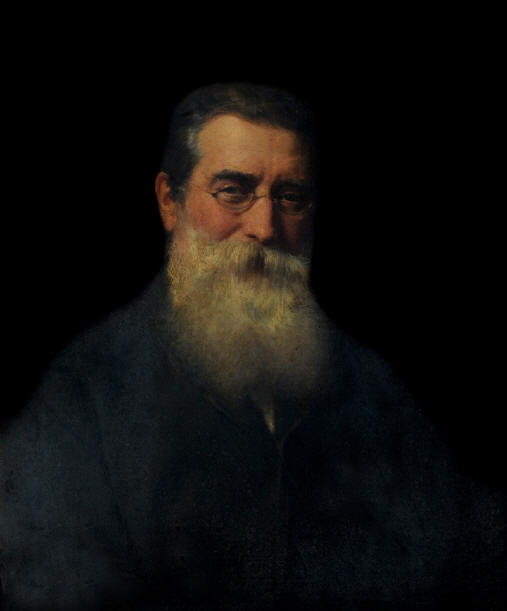 |
Sometimes incorrectly referred to as Edward Alfred as a result of an error in early art publications.
Edward Angelo Goodall, R.W.S. was born the 8th of June 1819. He was the eldest son of Edward Goodall, the well known line engraver and his brother was the celebrated Royal Academy painter Frederick Goodall. He received his education at the University School in London, and then entered the office of his father whose profession he was intended to follow.
During the period of his apprenticeship, he occupied his spare time making water colour drawings and sketches, one of which may almost be termed the keystone to his whole career. When only seventeen years of age, he made a large drawing of the landing of the Lord Mayor at Blackfriers Bridge in 1836. His father showed it to Clarkson Stanfield R.A.(1793-1867) who at once advised Edward Goodall to let his boy adopt the profession of painting. For this drawing he received the large silver medal at the Society of Arts. He also studied Gothic architecture from Pugin's works and then made a model of a room of the 15th century with furniture and armour complete. This so delighted William Powell Frith R.A. of the Academy, that he offered to paint him a picture for it.
In 1841 he obtained an appointment under the Government as artist to the Guiana (pre independence spelling) Boundary Expedition for the purpose of defining the limits of British Guiana under the command of Sir Robert Schomburgk beginning in July of that year. Goodall joined it at Demarara and proceeded to the interior where he made a large number of drawings and sketches not only botanical, but of the Amerindian tribes of Guiana. Today, these drawings and sketches are preserved in the British Library. To read "An Artist's Travels in British Guiana and the Crimea by Michael St. John McAlister", please click here. He kept a detailed diary as well which became the subject of a book published in 1977 titled "Sketches of Amerindian Tribes 1841-1843" by M.N. Menezes R.S.M. (ISBN 0 7141 0497 3). This book has been re published in 2002 by MacMillan Caribbean ISBN 0-333-99585-6. In addition to the diary references, over 70 of the sketches were reproduced in this book. The botanical drawings were retained by Schomburgh and sent to Berlin. Schomburgh's expedition were the only Europeans to ascend the Corentyne River from the source to the mouth which defined the boundary of British and Dutch Guiana.
Following his return to England, Goodall took up oil painting and had a picture in the Academy every season. His first oil painting was a Guyana subject which impressed Turner who was on the managing committee. He had the picture hung in a first rate place where it received considerable admiration. In December of 1854, Goodall received an appointment as artist correspondent to the Illustrated London news and was sent to the Crimea where he was attached to the Naval Brigade headquarters experiencing many narrow escapes while sketching in the trenches (click here to view his Crimea War drawings) and to quote the Illustrated London News in their Jubilee issue, "Goodall braved the perils of warfare in the service of the Pictorial Press." Goodall was at the battle of Tchernaya and remained in the Crimea for a year before returning to Rome to paint. While there he painted a picture of the fish market or "Pescheria" which eventually ended up in the Liverpool Gallery.
In 1856, Goodall was invited to join the Watercolour Society and from that time on he devoted himself to that medium. He began exhibiting in the Royal Academy in 1841 and continued until 1884. In 1870 he went to Egypt with his brother Fred and on one day while sketching the views of ancient Memphis, a woman overbalanced herself in filling her pitcher in the river. Seeing this, he jumped into the Nile and with much effort rescued her from drowning. The next day she received several offers of marriage, being considered under "Divine protection." During this period, Queen Victoria had taken an interest in his work and gave him permission to paint from any of the windows in the palace.
At a dinner held at Goodall's home, several artists were invited including John Dixon the engineer. Conversation eventually centered on Cleopatra's Needle in Egypt and John Dixon suggested that it be brought to England. He said that if he had the money he would do it himself. Shortly thereafter, Erasmus Wilson called on John Dixon and offered the money to bring the obelisk over. This was eventually done where it was placed in London.
Goodall painted in France, Italy, Spain, Portugal, Morocco, Gibraltar and Venice. He was to return to Venice 15 times to paint as it was his favourite. His residences were Grove Cottage until his marriage to Frances in May of 1858, and then 24 St. George's Square. In 1865 it was 3 Fitzroy Rd. and the St. George's Square house which Edward owned, was his studio. In 1884 they moved to 57 Fitzroy Rd. where they remained. In 1882 he was made a member of the Royal Watercolour Society. He kept busy right up until his death on April 16th, 1908, spending several hours a day painting. Following his death, a studio sale was held by Christies. His sketchbooks, diary of the Guyana expedition and personal letters were donated to the British Library in 2008. Edward Angelo Goodall was buried at Highgate Cemetery.
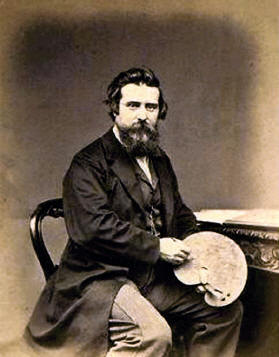 |
||
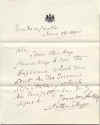 Letter dated 1895 to Edward A. Goodall from Queen Victoria's secretary, Windsor Castle. |
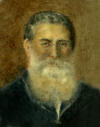 Miniature portrait |
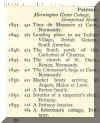  Royal Academy Exhibits |